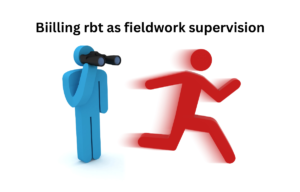To pursue a career as a landscape designer, a bachelor’s degree in landscape architecture, landscape design, or a related field is typically required. This educational path usually takes around four years and provides students with both the theoretical and practical knowledge needed in the profession. In addition to coursework, students often complete internships to gain hands-on experience in design and project management.
While a formal degree is beneficial, there are also certificate programs and associate degrees in landscape design that may be sufficient for certain roles within the field. These shorter programs offer more focused training and can be an option for individuals looking to enter the industry more quickly. Some landscape designers may also gain experience through apprenticeships or self-study, though higher education is generally favored for more advanced positions.
What degree is needed to become a landscape designer?
To become a landscape designer, a bachelor’s degree in landscape architecture or a related field is generally required. This degree program typically covers topics such as horticulture, design principles, urban planning, and environmental sustainability. A formal education helps students develop the technical and creative skills necessary to create functional and aesthetically pleasing outdoor spaces.
In addition to a degree, some employers may value experience gained through internships or entry-level roles in landscaping or design firms. While some may choose to pursue a master’s degree for more specialized knowledge or leadership positions, a bachelor’s degree is typically sufficient for entry into the field. Depending on the location, certification or licensure may also be required to practice as a professional landscape designer.
Are certifications necessary for landscape design professionals?
Certifications are not always required for landscape design professionals, but they can enhance a designer’s qualifications and credibility in the industry. While the primary educational requirement for a landscape designer is often a bachelor’s degree, some may choose to pursue certifications to demonstrate their expertise and commitment to the field. These certifications, such as those offered by the American Society of Landscape Architects (ASLA) or the Council of Landscape Architectural Registration Boards (CLARB), can improve job prospects and help professionals stay competitive.
When considering “What level of education is required for a landscape designer,” it’s important to understand that while a formal education provides the foundation, certifications serve as a valuable supplement. Certifications typically require a combination of education, professional experience, and passing exams that test knowledge of design, environmental issues, and technical skills. In many cases, obtaining a certification can help designers advance in their careers and offer specialized services in areas like sustainable design or urban planning.
What educational qualifications are required to work as a landscape designer?
To work as a landscape designer, a formal education is typically required, starting with a bachelor’s degree in landscape architecture, horticulture, or a related field. The degree provides a strong foundation in design principles, plant science, environmental planning, and engineering. In terms of “What level of education is required for a landscape designer,” a bachelor’s degree is the minimum requirement for entry into the profession, though some may pursue additional studies or certifications to specialize further.
In addition to the academic qualifications, hands-on experience is also crucial in the field of landscape design. Internships or work experience under experienced professionals can provide practical skills in design software, project management, and client interaction. “What level of education is required for a landscape designer” can vary slightly depending on the specific role, but having a degree in the field coupled with experience and possibly a certification will set a strong foundation for success.
How long does it take to complete the education for landscape design?
The time required to complete the education for landscape design typically involves earning a bachelor’s degree, which generally takes around four years of full-time study. During this time, students cover a broad range of topics, including design theory, plant biology, environmental systems, and landscape management. “What level of education is required for a landscape designer” is typically satisfied by a bachelor’s degree, and this duration allows students to gain both the theoretical knowledge and practical skills necessary for the profession.
For those pursuing advanced certifications or master’s degrees in specialized areas of landscape design, the education process can take longer. A master’s degree might take an additional two to three years, depending on the program and the student’s pace. However, most landscape designers can enter the field with a bachelor’s degree within four years, which is the standard “What level of education is required for a landscape designer” for initial employment.
Is a formal degree required or can landscape designers be self-taught?
While a formal degree is not strictly required for a landscape designer, it is often preferred by employers, especially for larger firms or complex projects. Many landscape designers enter the field with a degree in landscape architecture or a related field, fulfilling the “What level of education is required for a landscape designer.” A formal education equips designers with foundational knowledge in design principles, environmental systems, and technical skills that are crucial in the profession.
However, some individuals choose to pursue a self-taught route, gaining experience through hands-on work, internships, or mentoring. While this approach can be effective, self-taught designers may find it more challenging to meet the industry standards and compete in a market where formal education plays a significant role. The “What level of education is required for a landscape designer” can vary based on experience and portfolio, but formal education remains an essential factor for many professionals in the field.
What are the best schools for landscape design education?
When exploring the best schools for landscape design education, it’s essential to consider programs that offer a comprehensive curriculum in design principles, environmental studies, and technical skills. Institutions such as Harvard University, Cornell University, and the University of California, Berkeley are renowned for their landscape architecture and design programs, which answer the question of “What level of education is required for a landscape designer.” These schools provide a strong foundation for aspiring designers with both undergraduate and graduate-level programs that integrate theoretical knowledge with practical application.
In addition to prestigious universities, there are specialized institutions like the Rhode Island School of Design and the Landscape Institute at Harvard University that focus specifically on landscape design. These programs cater to those looking to deepen their expertise and directly address “What level of education is required for a landscape designer.” Graduates from these programs typically have a competitive advantage in the field, equipped with the skills necessary to design and manage complex landscape projects.
In conclusion, pursuing a formal education in landscape design is crucial for gaining the necessary knowledge and skills to succeed in the field. Understanding “What level of education is required for a landscape designer” is key, as it helps individuals determine the best academic path for their career aspirations. Whether through a bachelor’s degree or advanced certifications, obtaining the right education ensures a strong foundation for a successful career in landscape design.
Read more at our website.









